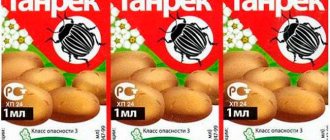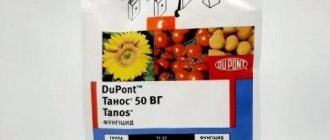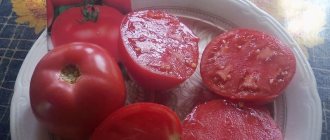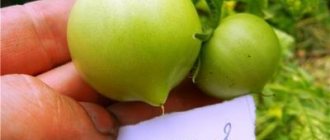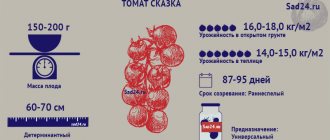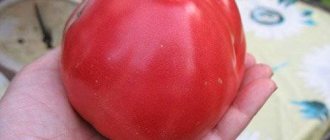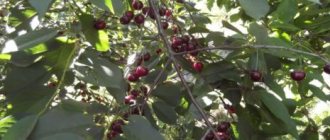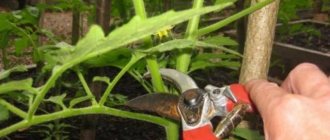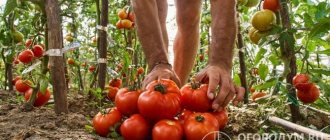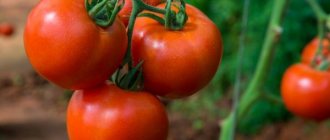Loading…
Loading…
Understanding that the ecology of the earth is constantly deteriorating, agronomists have to take care of the successful development of garden crops. Particular assistance is provided by the unique drug Trichoderma Veride, which is intended not only for the treatment of plants, but also for the prevention of various infectious diseases. The substance is created on the basis of fungi of the septophyte class. They easily take root on the root system of garden crops, creating reliable protection for them. Successfully developing in a new environment, fungi destroy parasites that cause various diseases.
Just what the doctor ordered, or How mushrooms help protect plants from diseases
Plant diseases, perhaps, can be classified as the personal enemies of the summer resident.
And it’s not just the unsightly appearance (blackened leaves, drooping shoots, mummified or moldy fruits), which evokes despondency and spoils the mood... Diseases do not even think of being modest - sometimes a good half of the harvest goes to them. Healthy plants in the garden and vegetable garden are a summer resident’s dream
Naturally, the fight against them has been going on since time immemorial: at first they tried to solve the problem in the simplest ways - by pruning (or cutting down) diseased plants: such work took a lot of time and effort, but its effectiveness left much to be desired. Then infusions and decoctions of plants and improvised folk remedies were used - this was better, but it was also not possible to completely solve the problem with their help.
When gardeners were already close to despair, help came - natural pathogenic forms were powerless against synthetic fungicides created in laboratories. For a while... And then they adapted, and the next generations became resistant to the drugs. Chemists increased the dose of poison - the pathogens worked harder and produced an even more resistant (already practically indestructible) generation. The path turned out to be nowhere: the more powerful the drugs, the more resilient the pathogens, the larger doses required to destroy them, the more polluted the soil, air, and water.
Scientists are creating increasingly powerful synthetic fungicides that pollute the environment
So there is no way out? Well, of course you are! You just need to approach the problem differently. Put aside the bucket with the next portion of fungicide - by going against nature, grossly disturbing the balance that reigns in it, we are a priori doomed to defeat. It's time to remember about microscopic fungi that will protect plants much better than powerful drugs. Does it look like a fairy tale? Well, yes, we are already so confident in our own power that we cannot even admit the thought that nature has its own plant defense mechanisms, which are completely safe for all living things. And many simply do not know about the existence of antagonistic fungi, so they are forced to use chemicals - after all, plants need to be protected. It's time to fix the situation, and let's start right now!
What is Trichoderma?
Today we will talk about fungi of the genus Trichoderma, which includes the following species: T. lignorum, T. koningii, T. reesei, T. harzianum, T. Viride, T. longibrachiatum, T. pseudokoningi, T. pilulifermum, T. polysporum, T. hamatum, T. aureoviride. They cannot be called rare: they inhabit soils rich in organic residues - cultivated and virgin lands, forests, taiga and meadows.
Trichoderma
Leaving scientific terms to specialists, we will use definitions that are understandable to the average summer resident, so that during the reading process we do not have to use reference literature. So, Trichoderma is a microscopic soil fungus-saprophyte that:
- feeds on organic matter (the remains of plants and animals), actively decomposing it, enriches the soil with nutrients;
- releases biologically active substances that inhibit the development and reproduction of pathogens and strengthen plant immunity;
- parasitizes pathogenic fungi (using their bodies and mycelium for nutrition), suppressing late blight and verticillium, root and fruit rot, wilting of various etiologies, scab on vegetable, fruit and flower crops;
Trichoderma may suppress late blight
- enters into symbiosis with roots (mycorrhiza), enhancing plant nutrition;
- some species produce phytohormones (auxin, ethylene, cytokinin) that stimulate plant growth and development;
- synthesizes powerful natural antibiotics (trichodermin, viridin and others);
- actively participates in the synthesis of humus;
- structure the soil (enveloping soil particles with mycelium growing through them).
It is important to understand here that trichoderma is not a superhero rushing to the rescue at our call - no! All of the above properties, which are extremely beneficial for soil and plants, are products of its natural life activity.
Trichoderma viride in nature. Photo from the website galeria.nagrzyby.pl
Just imagine, a microscopic fungus can save our garden from such large-scale problems as:
- fusarium;
- late blight;
- Alternaria blight;
- tracheomycosis;
- rhizoctoniasis;
- Verticellium wilt;
- blackleg;
- various rots.
And this is not a complete list of defeated enemies!
Fitosporin
This is a systemic biofungicide.
The active ingredient is soil bacteria Bacillus subtilis. Once in plants, they begin to suppress the proliferation of pathogenic fungi and bacteria. The drug is not dangerous either for humans or for the environment. It can be used for plants at any phase of the growing season, to disinfect seeds and planting material. In addition to Fitosporin "Universal", a separate one is produced - for potatoes and tomatoes, as well as FitosporinM "Reanimator" for flowers.
Any type of drug has a remarkable long shelf life - almost 4 years. But the prepared solution cannot be left for a long time; it should be used immediately.
Fitosporin is available both liquid and in the form of a paste-like substrate or powder.
Advantages
- successfully defeats 25 diseases of fungal and bacterial origin (for example, late blight, powdery mildew, bacterial cancer, fusarium rot, etc.);
- the scope of its application is wide - from treating seeds and seedlings to healing grown plants;
- the ability to use a fungicide in any phase of the growing season;
- bacteria are kept alive in a wide range of temperatures (from -50C to +40C).
Fitosporin should be stored in shaded places, avoiding direct sunlight; Spraying of plants should be carried out in cloudy weather or in the evening.
Areas of use
Used for different purposes:
- improvement, improvement of soil, its structure and properties;
- accelerating the “ripening” of compost;
- preparation of seedlings and seeds;
- cures for diseases of adult plants.
To improve the health and composition of the soil, the drug is used for spring or autumn digging (watering). During the growing season, plants are regularly sprayed; for preventive purposes, seeds, bulbs, corms, and rhizomes are soaked immediately before planting. It is necessary to spray once every one and a half to two weeks until the effect is achieved.
Watering:
- vegetables – once a month;
- berries and fruits - once every half month.
The drug is highly soluble in water.
Do not use chlorinated water for solutions! Better - rain, spring, well, melt or boiled water. After diluting the phytosporin, you need to let the solution stand - so that the bacteria have time to wake up and become active. For powder (after dilution), two hours is enough; for paste you need to wait a few days (2-3); liquid is immediately ready for use. To dilute the paste or powder of the drug, you need water at room temperature. Dosage for different crops is indicated on the packaging
Powder, paste or liquid drug work the same, but the dosages differ, which is why it is so important to carefully read the instructions on the package
Safety precautions should be observed (working clothing, gloves).
In general, the action of Fitosporin is similar to the action of Trichodermin.
Why are drugs needed?
And here it is logical to ask the question: why do the plants in our areas get sick, why does Trichoderma not protect them? The answer is simple: it's all about quantity. Fungi, like all living organisms, require certain conditions of existence (temperature, reaction and soil moisture, availability of food). If everything suits them, they will develop (work) at full capacity, but if the conditions for their existence are unfavorable, do not expect effective results; it may happen that the spores will not even be able to germinate (for example, if the substrate humidity is below 20%).
Frequent use of chemicals has a detrimental effect on soil microflora. The human factor should not be discounted - the use of chemicals (insecticides, fungicides, pesticides) has a detrimental effect on soil biota. Moreover, pathogens are much more resistant to synthetic fungicides than antagonistic fungi. If pathogens predominate in the soil, the plants will spend all their energy fighting them: what kind of immunity and harvest can we talk about!
What to do
If there is nowhere to rush, you can simply wait until the number of beneficial mushrooms in the soil increases naturally, delegating the honorable responsibilities of restoring harmony to Mother Nature. It’s hard to say how many years later the idea will be crowned with success, that is, the joy of seeing healthy plants on your plot in the near future and enjoying a rich harvest is postponed indefinitely. But there is another way to solve the problem - simple and effective - the drug TrichoPlant. The drug "TrichoPlant"
"Trichoderma veride" - 1 drug against 60 diseases
It is based on microscopic fungi of the genus Trichoderma, friendly to cultivated plants, suppressing more than 60 types of pathogens. When using the drug “Trichoderma veride” , mycelium (mycelium) grows from the spores, which begins to parasitize pathogenic fungi (the same ones that cause many plant diseases) and destroys pathogenic microflora.
"Trichoderma veride" will successfully cope with such common diseases as:
- black leg on seedlings;
- various bacterioses and alternaria of cabbage;
- root and basal rot;
- tracheomycosis wilt;
- peronosporosis (downy mildew) and ascochyta blight of cucumber;
- late blight, alternaria and tomato rot.
With "Trichoderma veride" you are not afraid of various bacterioses and alternaria of cabbage. "Trichoderma veride" treats peronosporosis (downy mildew) and ascochyta blight of cucumber. "Trichoderma veride" will destroy late blight, alternaria and rot of tomato.
In addition to them, “Trichoderma veride” will protect against many other diseases not only of vegetables, but also of ornamental and indoor plants, garden strawberries, grapes, fruit trees and berry bushes.
"Trichoderma veride" will protect against many diseases of ornamental and indoor plants
Once in moist soil, Trichoderma fungal spores germinate, releasing natural antibiotics and disinfecting the surrounding soil. And when they land on a damaged area of a diseased plant, the spores germinate, feeding on the diseased tissue, and at the same time healing the plant.
The fungus grows, forms mycelium and constantly releases substances beneficial to plants and soil, for example, enzymes and toxins that prevent the proliferation of pathogenic microorganisms. As a result, the disease does not spread, and the pathogen dies. The fungus destroys both the resting and wintering stages of pathogens, thus the drug “Trichoderma veride” has a prolonged effect.
Composition and principle of operation
The drug is a powder containing billions of dry spores of the microfungus Trichoderma veride. Once in a moist and warm environment (soil), they germinate, multiply and form colonies invisible to the eye. This type of fungus is harmless to plants because it does not feed on their living tissues (unlike pathogenic microbes).
Colonies of Trichoderma veride actively process dead soil organic matter (plant residues, manure, etc.), grow very quickly and aggressively displace other types of fungi. This reduces not only purely soil infections, but also other harmful microorganisms whose spores enter the upper soil layer (in the summer or for the winter). Along the way, Trichoderma releases substances into the environment that are natural antibiotics and stimulants for plants.
How is this possible?
Trichoderma is an aerobic saprophytic fungus. This means that it needs air to develop, and it feeds on the remains of plants and animals, converting organic substances into inorganic ones. Thus, mycelium development occurs best in aerated, organic-rich soil. The acidity can be any, although slightly acidic soils are considered optimal.
By decomposing organic matter, Trichoderma forms compounds of nitrogen, phosphorus, and potassium in a form that is easily accessible to plants. That is why the drug “Trichoderma veride” , in addition to fighting diseases, promotes plant growth and increases their productivity.
Trichoderma, growing and coming close to the roots of plants, enters into symbiosis with them, mycorrhiza is formed, and it significantly enhances plant nutrition. Increasing productivity and product quality is a consequence of this.
"Trichoderma veride" promotes plant growth and increases their productivity
How to use the drug
to use the drug “Trichoderma veride” and this can be done at absolutely any stage of growth, since the drug is completely safe for people, animals, insects, plants and the environment as a whole. Does not accumulate in the crop (fruits, berries, stems, etc.). Thus, the drug has no waiting period.
The drug "Trichoderma veride" is available in dry form in a package of 15 g, 30 g and a plastic container of 120 g.
Before use, the powder is diluted in water according to the instructions and used by watering plants at the roots, spraying, soaking seeds and planting material. After soaking for 1-2 hours, the seeds should be dried in the shade. For watering and spraying, the powder is first dissolved in a small volume of cool, but not cold (25-35°C) water, stirring constantly, then brought to a volume of 10 liters.
The diluted drug should be used immediately. Spraying should be done in the morning or evening, when there is no scorching sun, in dry, windless weather. In addition, the drug can be mixed dry with soil.
Instructions for use of the biological product
Trichoderma solution is diluted immediately before use. The resulting product is injected under the root or used for spraying. You can also soak seeds in it before sowing them in the soil.
A standard solution is used to process vegetable crops
In order for the drug to take effect, it is necessary to create the proper conditions for fungi to grow and reproduce. The most important criterion is temperature. To begin the protective effect of the solution, the temperature outside must be within +5-30 degrees Celsius.
Trichoderma can be used at any stage of development of phytopathologies and during any periods of plant growth.
The timing of use and the concentration of the solution depend on the purpose and which crops will be treated.
Vegetable Garden School: Trichoderma - what kind of mushroom it is, how and when it is used
Adding an article to a new collection
Despite the scary name, trichoderma is not a disease, but rather a cure for many garden problems. And by taming this substance, you can become a faithful ally in the fight against the most common fungal diseases.
First, let's figure out what kind of animal Trichoderma is. This is just an antagonist fungus of the Ascomycota division, family Hypocreaceae. Its main value for gardeners is the fact that during the development process, Trichoderma produces several types of antibiotics that destroy phytopathogenic fungi. Let's look at this in more detail.
How Trichoderma works
In fact, Trichoderma is a common soil fungus that has been used in agriculture for more than 70 years. Developing on the surface of the roots of any plants, it increases their absorption capacity, creates a natural barrier to phytopathogenic flora and strengthens the immune system. In addition, during the feeding process, Trichoderma decomposes polysaccharides, converting the nutrients present in the soil into a form easily digestible by plants.
Its main advantage is that ridges treated with Trichoderma are almost never affected by fungal diseases. That is, late blight, white, gray and root rot, fusarium, tracheomycosis, phomosis, alternaria, ascochyta blight, helminthosporiosis, black leg, verticillium wilt, powdery and downy mildew bypass the ridges.
Trichoderma under a microscope
Based on spores, mycelium and waste products of Trichoderma, preparations such as Trichodermin, Trichoplant, Glyokladin, Trichocin, etc. are produced.
The yield of plants also changes - thanks to increased nutrition, they produce almost a third more fruit than usual.
Trichoderma and preparations based on it are non-toxic to people, animals, insects and fish, do not accumulate in the soil and do not affect the taste and appearance of grown products.
Trichodermin
Description
Antifungal agent for biological plant protection. Able to resist about sixty different diseases, here are some of them:
- Late blight;
- Fruit rot;
- Scab;
- Powdery mildew;
- Black leg and others.
Compound
- Fungicide Trichoderma lignorum (Trichodermin) is the main component of the drug;
- Vitamins;
- The soil substrate is a medium for spores.
Price
The cost varies depending on the city. But on the Internet you can buy “Trichoderma viride” ten sachets of 15 grams for about 300 rubles.
Storage conditions
If the conditions are met, the product can be stored for nine months. Keep the drug in a cool (10-15 degrees Celsius) dark place.
Purpose
- Prevention and treatment of crops;
- Improvement and enrichment of soil;
- Seed dressing;
- Spraying garden plants.
Operating principle
Fungi called Trichoderma lignorum destroy dangerous microorganisms. Thanks to the chemical composition of their spores, the soil around the plant is significantly enriched with phosphorus and calcium. This stimulates the growth of crops. The algorithm of action of trichodermin is as follows:
- The fungus, which is the main component of the drug, begins to spread quickly;
- During the life of Trichoderma lignorum, enzymes are released into the external environment, which has a detrimental effect on soil microorganisms;
- As a result of the release of carbon, plantings are enriched with nitrogen, phosphorus and potassium. Nitrification processes begin, and the cell sap formed in plant tissues stimulates its resistance to disease.
How to use Trichoderma
The timing and method of using Trichoderma depends on the problem you want to solve. In principle, its application at any stage of growing plants will only benefit them. But you need to remember that Trichoderma can only develop at temperatures from 5 to 35 ° C, which means that it makes no sense to use it in the cold season (early spring or late autumn after harvesting).
Trichoderma seed treatment
Pre-sowing treatment of seeds with Trichoderma is carried out 1-3 days before sowing. They are soaked in a solution prepared according to the instructions on the product packaging. Most often, 50 ml of the drug per 100 ml of water and soaking for 60 minutes is enough.
Seeds treated in this way germinate better and are 20% less likely to suffer from fungal diseases at the seedling stage.
Treatment of seedlings with Trichoderma
To strengthen plant immunity and maximize survival rate, treatment with Trichoderma can be carried out right before planting seedlings in a permanent place. To do this, prepare a nutrient solution at the rate of 100 ml of the drug per 10 liters of water and pour it into containers with seedlings. If the seedlings have already been removed from the pots, you can immerse them in a trichoderma solution for 30 minutes and then plant them.
Soil treatment with Trichoderma
It makes sense to treat the soil with Trichoderma in two cases - as a preventive measure before planting and during spring or autumn tillage. In the first case, a solution is prepared at the rate of 50 ml per 10 liters of water and watered with the resulting mixture over 10 sq.m of soil. In the second case, take 150 ml of the drug into a bucket of water and pour the resulting volume onto 1 hectare of land.
In the spring, treatment is carried out a week before planting and sowing seeds, in the fall - immediately after harvesting or when plant residues are embedded in the soil.
Treatment of plants with Trichoderma for diseases
If all the deadlines for preventive treatments have already been missed, and you find the first signs of late blight, white or gray rot and other diseases on the plants, you can urgently treat them with Trichoderma. To do this, add 75-100 ml of the drug to a bucket of water and water the plantings at the root every 10-12 days until the signs of the disease disappear. It’s even better to do this before harvesting - the drug is absolutely safe, so this will not affect the quality of the product.
Have you already used Trichoderma-based products on your site?
Fitosporin
A microbiological preparation effective against fungal and bacterial diseases of any crops.
Compound
- The main component is the bacteria Bacilus Subtilis;
- Some brands contain the dietary supplement “Gumi”, consisting of humic acid, brown coal and macroelements.
Storage conditions
The shelf life is four years. Store Fitosporin in a dry place, inaccessible to children and animals, at a temperature of -20 to +30 degrees Celsius.
Purpose
- Treatment of plants from bacterial and fungal diseases;
- Spraying crops during the flowering period;
- Seed treatment.
Operating principle
After treatment, microorganisms begin to actively feed, and their excretory processes accelerate. Metabolic products have a detrimental effect on fungi, and their reproduction process is inhibited. Since the drug strengthens the immunity of the plant crop, the likelihood of re-infection is close to zero.
It is worth noting that the effect of phytosporin is not capable of harming plantings and does not cause allergies or poisoning in humans.
Trichodermin and Trichoderma veride biological plant protectors
Trichodermin and Trichoderma veride are preparations for the biological control of fungal diseases. These are biofungicides that have proven themselves to be effective, reliable preparations that are used on all agricultural and ornamental crops, both open and closed ground.
The drug effectively suppresses and protects from pathogenic pathogens of fungal diseases, more than 60 of them. The most common ones found in our gardens are fusarium, anthracnose, alternaria, ascochyta, rhizoctonia, late blight, scab, peach curl, downy mildew, also known as mildew, powdery mildew, also known as oidium, white and gray rot.
Area of use
"Trichoderma Veride" is allowed to be used for the treatment and prevention of all garden and vegetable crops, without exception. In addition, the drug is used to treat ornamental plants, both open ground and growing indoors.
The list of diseases against which the drug works effectively includes blackleg, various types of rot, including root rot, Alternaria rot, bacteriosis, powdery mildew, late blight, ascochyta blight and others.
Gardeners include the following benefits of biofungicide:
- increase in yield up to 30%;
- general improvement of the soil on the site;
- a wide range of pathogens against which biological agents are effective;
- convenient formulation and packaging;
- possibility of use for both treatment and prevention of diseases;
- increasing decorativeness and prolonging flowering of crops;
- Possibility of use on all plants;
- no harm to the environment and humans;
- stimulating the development of the root system;
- transfer of macro- and microelements into accessible forms for plants;
- Possibility of use both in open ground and in greenhouse conditions.
Benefits of Trichodermin and recommendations for use.
- The drug is of biological origin and can be used during the harvesting period of agricultural crops.
- Fights the main pathogens of garden plants.
- The drug has synergistic properties of compatibility with other biological drugs. That is, it works even more effectively in combination with biological drugs.
It is recommended to use Trichodermin at temperatures of plus 12°C and above. It is not recommended to use chemical fungicides together with Trichodermin. Trichodermin is compatible with organic fertilizers.
Precautionary measures
The drug does not pose a danger to human health, however, when working with it, basic safety rules should be followed. Wear a work coat and rubber gloves. At the end of the treatment, wash your hands, face and all work equipment with soap.
Since a biological fungicide can disrupt the ecological balance of water bodies, it is not recommended to use it in close proximity to rivers and lakes.
Using trichodermin in a summer cottage.
We do preventive spraying with Trichoderma after germination and at the beginning of budding. If plants, in particular tomatoes, are already affected by late blight, it is necessary to spray with double the concentration of trichodermin solution.
Spraying with trichoderma is done in the evening, since solar ultraviolet radiation has a detrimental effect on trichoderma. Spraying after rain on wet leaves is especially effective.
You need to carry out three such treatments at intervals every other day and the results will please you.
Grapes can be sprayed with Trichoderma starting from bud break at intervals of 2 weeks until the end of the season. For preventive treatments, take 50 ml. trichodermin solution per 10 liters of warm non-chlorinated water. Consumption rates and concentration of dry preparation trichodermin – 10 g. / 10 lit. / 1 weave.
The following table summarizes the dosage, application rates and frequency of treatments with Trichodermin and Trichoderma veride.
| Type of events | Consumption rate and dosage | Frequency of processing |
| Tillage | 30-40 ml. per 1 m 2 | Once before spring digging, or processing planting holes. |
| Soaking the seeds | 30-40 ml. drug per 1 liter of water. | Before sowing |
| Transplanting plants, treating roots before transplanting | 50 ml. drug per 1 liter of water. | Before boarding |
| Treatment of seed potatoes before planting | 250 g of the drug per 10 liters of clean water, per 100 kg. planting material | 1-2 times processing |
| Spraying plants | 20-50 ml per 10 liters of water depending on the crop being treated | Conducted no more than once a week |
It should be remembered that if the weather is dry, hot, the concentration of the solution should be reduced, but treatments should be carried out more often. Because in hot weather microorganisms die faster. And more frequent applications will maintain a more stable population of these beneficial fungi in your yard.
I would like to emphasize once again that the effectiveness of the use of drugs containing Trichoderma does not depend on the concentration of the solution and the frequency of treatment. And from when you do it. The most important thing is to populate your plants with a beneficial microorganism in advance before the onset of diseases as a preventive measure.
Analogs
A biofungicide based on an antagonistic fungus has several analogs that are similar to it in composition and effect on pathogens:
- Phytodoctor (based on Bacillus subtilis);
- Fitosporin (bacillus hay);
- Riverm;
- Gaupsin;
- Planriz.
Each drug has its own specificity and effectiveness. When choosing, you need to study the features, recommendations, instructions for use in order to get maximum results.
Compatibility of using Trichodermin:
- You cannot prepare tank mixtures with preparations containing copper and mercury;
- use with solutions containing strains of Metarizin spores is excluded.
Choosing Trichodermin or Fitisporin – which is better?
Trichodermin and Fitosporin are two well-known and popular biological preparations among gardeners. Both help suppress the reproduction, growth, and development of dangerous pathogens and “work” through fungal spores.
They differ in the following characteristics:
- spore strains (Trichodermin is the fungus Trichoderma Lignorum, Fitosporin is Bacillus subtilis);
- speed of action (Trichoderm acts quickly, Bacillus subtilis acts more slowly, as it penetrates the cells and suppresses pathogens from the inside);
- release form (Fitosporin is produced in the form of gels, paste, powder, liquid).
Like all biological products, both products cannot be used in combination with chemical-based pesticides and fungicides.
